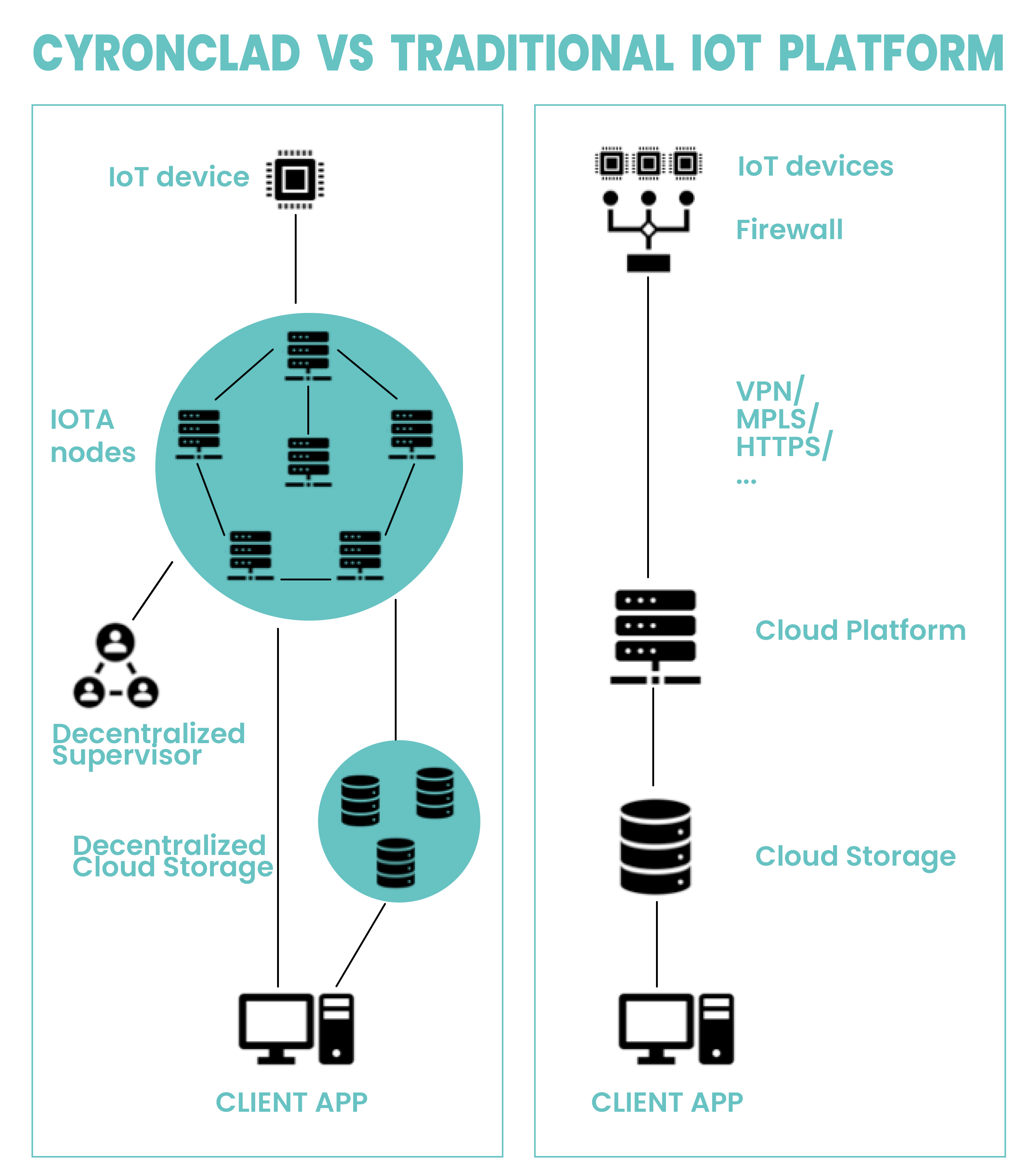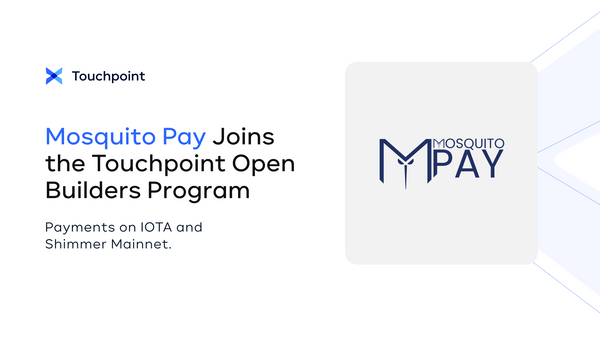Teleconsys Joins Touchpoint Open Builders Program
A Distributed Oracle Framework on Shimmer and IOTA
Teleconsys (www.teleconsys.it), a leading cybersecurity firm, has joined the Touchpoint Open Builders Program with their project, dOra. Built using the IOTA Identity Framework, dOra aims to redefine IoT infrastructure security by leveraging decentralized technologies and collective evaluation.
Recognizing the limitations of conventional approaches, Teleconsys developed dOra to empower authorized individuals to execute critical tasks autonomously, mitigating human error and enhancing protection against malicious attacks. Let’s learn more in Teleconsys’ own words.
Teleconsys introduces itself
As cybersecurity experts who assist organizations in designing highly secure IT infrastructures, we have realized that traditional centralized platforms face significant vulnerabilities, including attacks, data leaks, and malfunctions at the application layer, which most cybersecurity tools fail to adequately address.
Consequently, the most viable cybersecurity solution is to restrict critical tasks to an autonomous, decentralized system on request by a committee of authorized individuals. With an authorized committee, it becomes virtually impossible for all members to collectively execute a wrong task.
To find a solution, we developed a decentralized infrastructure for IoT, focusing on IOTA Identity for data authenticity. To ensure security, we designed a specialized device with the STM32 U5 microcontroller, featuring an embedded "trust zone" for secure execution. With this foundation, we aimed to decentralize data collection and device management in IoT solutions.
The result is dOra (“Distributed Oracle”). Similar to the IOTA Smart Contract Framework, dOra enables the creation of independent node committees that establish trust through collective evaluation. The committee acts as a programmable entity capable of collecting data from various sources, processing it using client-supplied Docker images, signing the data with distributed threshold signatures, publishing it to any destination, and storing it in separate object storages controlled by each committee member.
dOra has diverse applications, from creating a distributed supervisor for IoT infrastructure to building distributed storage accessible through the IOTA network, REST API, or the IPFS standard interface. Additionally, it can function as a traditional blockchain Oracle by capturing data, integrating it into the ledger, and triggering smart contracts.
An advantage of dOra is that each committee possesses its own identity based on the W3C DID, which includes a public key. Consequently, the committee can sign data and transactions by combining partial signatures from its members. However, individual members can’t perform this task independently, as there is no committee private key. Instead, each member signs their own produced data, and a valid committee signature can only be generated if the majority of members produce identical data.
To enable reliable communication among committee members and ensure data integrity, dOra utilizes IOTA. It facilitates Proof of Inclusion, certifying the existence of data at a specific date and time, as well as Proof of Conservation, which confirms that data is stored on multiple distinct object storages managed independently.
Using dOra, we’ve also created Cyronclad, a fully decentralized IoT infrastructure that resolves the common challenges faced by cloud-based infrastructures. Cyronclad can be used to create a new IoT network or to enhance existing setups. By employing a dOra-based committee of nodes to handle critical processes, Cyronclad eliminates any critical vulnerabilities in the infrastructure.

The dOra project is currently in the testing phase. Our ideal partners are innovative companies seeking support in designing and developing a critical platform or improving an existing one. Once we complete the initial proofs-of-concept and trials, our plan is to make Cyronclad accessible to the public, either as a service or as a dedicated tenant.
While our competitors primarily provide IoT solutions as service providers, Teleconsys distinguishes itself as a system integrator. As a result, we can collaborate with providers to handle critical tasks within standard solutions. While dOra, as a development framework, shares similarities with well-known solutions like Chainlink, our unique approach, utilizing IOTA Identity and granting data storage, sets dOra apart from any other distributed programmable systems.
Shimmer plays a pivotal role in our go-to-market strategy as it addresses the selection of committee members. By utilizing Shimmer, the platform owner can independently and possibly anonymously select committee participants. This approach assures platform users that even the platform owner cannot manipulate the committee into executing tasks incorrectly.”
Conclusion
With dOra, Teleconsys aims to revolutionize the way digital infrastructure is secured and managed, offering a powerful and innovative solution for organizations seeking to enhance their cybersecurity measures. Stay updated on the latest developments as dOra and Teleconsys pave the way for a more efficient and transparent IoT landscape. You can find out more about the team behind Teleconsys at https://www.teleconsys.it/our-people/; in the meantime, why not follow them on Twitter at @Teleconsys for the latest news.
About Touchpoint
Teleconsys joins the Touchpoint Open Builders Program, offering participants a community of like-minded builders, direct access to experts, knowledge, and general support to launch and scale the next generation of decentralized applications and infrastructure on the Shimmer network. You can learn more about how Touchpoint works and how to become a part of it here.
About Shimmer
Shimmer is an L1 innovation network providing the core building blocks for a scalable, modular multi-chain architecture. Similar to the IOTA network, Shimmer is built on a UTXO-based parallelized, directed acyclic graph (DAG), guaranteeing higher scalability than conventional Blockchains. At the same time, Shimmer ensures interoperability and composability of L2 smart contract chains, capable of connecting any type of L2 smart contract chain anchored to it. With its unique tokenization framework, Shimmer will become a multi-asset ledger for feeless minting and transfer of native assets without middlemen or crippling gas fees.
The native token of Shimmer is SMR, which serves as the network’s economic backbone, facilitating value transactions and interactions within the Shimmer ecosystem. Shimmer users use the SMR token to launch new DeFi applications, DEXs, NFTs, DAOs, and other dApps.
Disclaimer
Every project that participates in Touchpoint is given the opportunity to introduce itself in its own words. Statements made by projects are not verified by Touchpoint, Shimmer, or the IOTA Foundation and should not be taken as an endorsement. Individuals are advised to always conduct their own due diligence when engaging with any crypto projects.
Follow us on our official channels for all the latest Shimmer news:
Discord | Twitter | LinkedIn | Reddit



